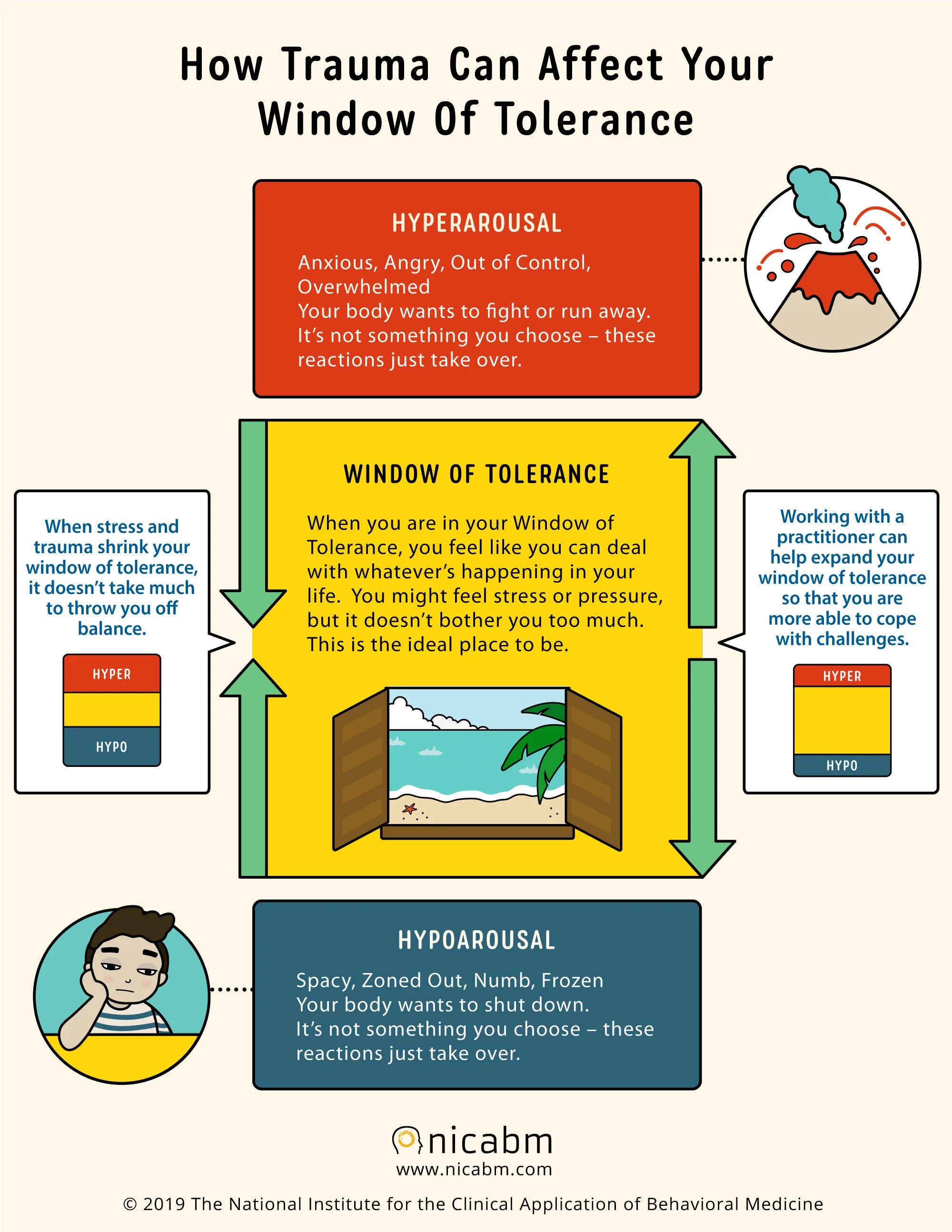Fight, Flight, or Freeze and the Body
Learn about the “window of tolerance” concept, and the body’s natural response to experiencing trauma.
Written by Angela Kaushik, LCSW
Counselor at CHARG Resource Center
Bodies are magnificent fighting machines; set to do whatever it takes to keep us alive. When in a dangerous situation, the body’s sympathetic nervous system increases hormones to prepare our body to fight, flee, or freeze. Once danger has passed, the parasympathetic nervous system reduces stress hormones and allows the brain to shift back to normal state of control. Think of the sympathetic and parasympathetic nervous systems like the gas pedal and brake pedal in a car trying to maintain the body’s “just right” level of reaction to events.
Want to feel your sympathetic and parasympathetic nervous systems in action? Try breathing in as long as you can, then breathe out as slowly as you can. When you breath in your sympathetic nervous system uses adrenaline to speed up your heart, when you exhale the parasympathetic nervous system is activated and it slows down the heart.
So, what’s going on when danger passes, but the body still feels on edge? This is what a traumatized body does, it continues to organize itself as if the trauma is still occurring, every new encounter or event is filtered through the body’s past memories. Instead of settling back down into a “normal” range of sensitivity, the body gets stuck in hyperarousal (anxiety, irritable, hypervigilance, etc.) or hypoarousal (depression, numbness, dissociation, etc.). This means that the next event could be perceived as a higher risk than it would be before the traumatizing event(s) occurred, making it easier, and more likely the body will jump into flight, fight or freeze; when previous to traumatic event, the body would have kept its cool, and moved on easier.
This idea is known as the window of tolerance, and in traumatic therapy, one works with their therapist to develop coping techniques that allow the body to feel safe, and widen the window of tolerance. Once the window of tolerance is widened, processing emotions around trauma can occur.
Seek help & work with a therapist: We recommend working with a therapist to widen your window of tolerance and develop new coping techniques if you’re interested. Some people believe that only major traumatic events can cause this type of body response. However, our bodies can also experience this when we deal with traumatic experiences that are highly distressing and disruptive without being physically life-threatening. These could include events that we have normalized as part of life, such as divorce, rejection, psychological abuse, financial hardship, loss of a job, or dealing with COVID-19 pandemic.
Resources & Further Reading:
https://www.nicabm.com/trauma-how-to-help-your-clients-understand-their-window-of-tolerance/
The Body Keeps the Score: Brain, Mind, and Body in the Healing of Trauma, Book by Bessel van der Kolk
Trauma and Recovery, Book by Judith Herman, M.D.
Image Credit: The National Institute for the Clinical Application of Behavioral Medicine


